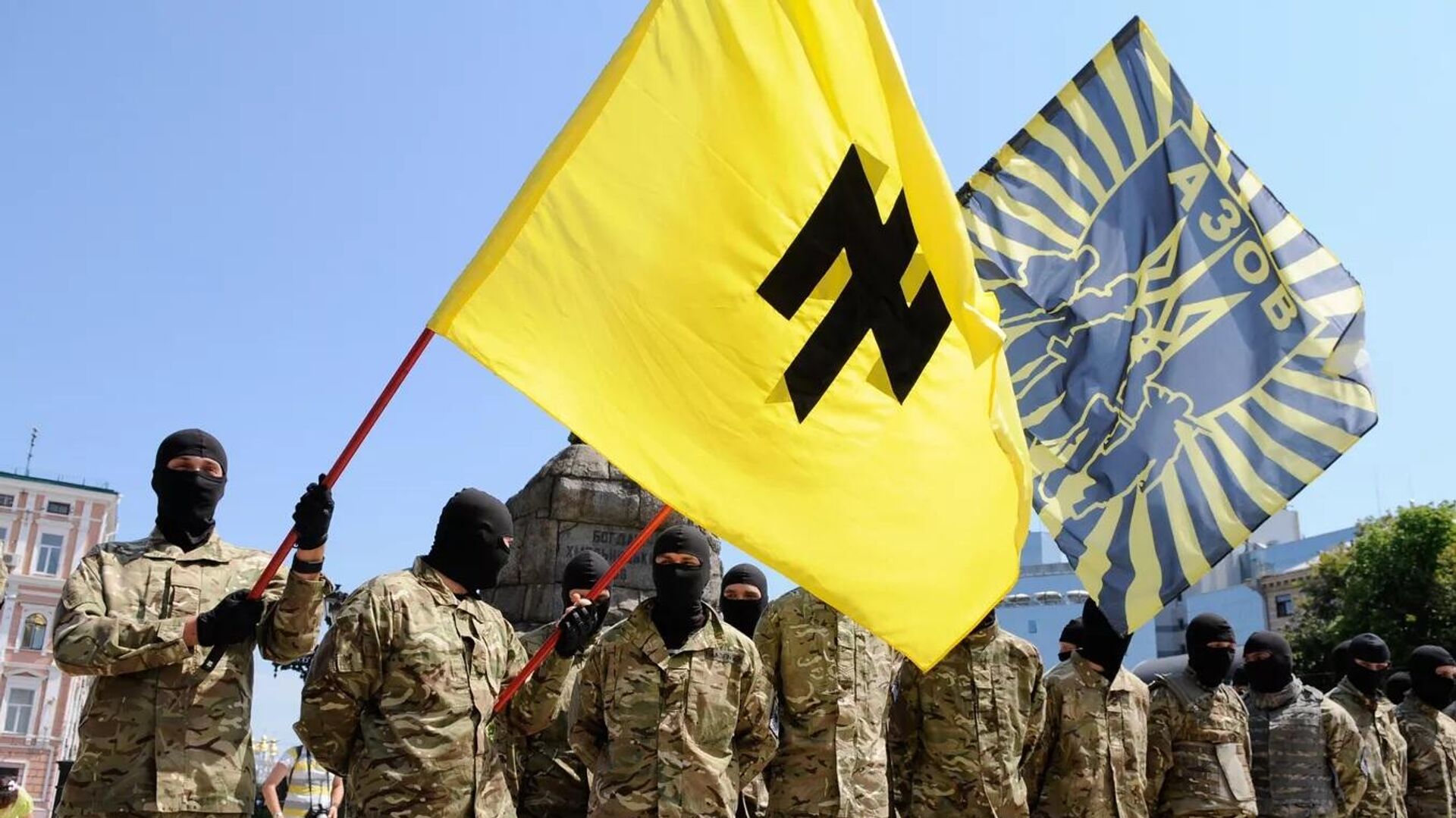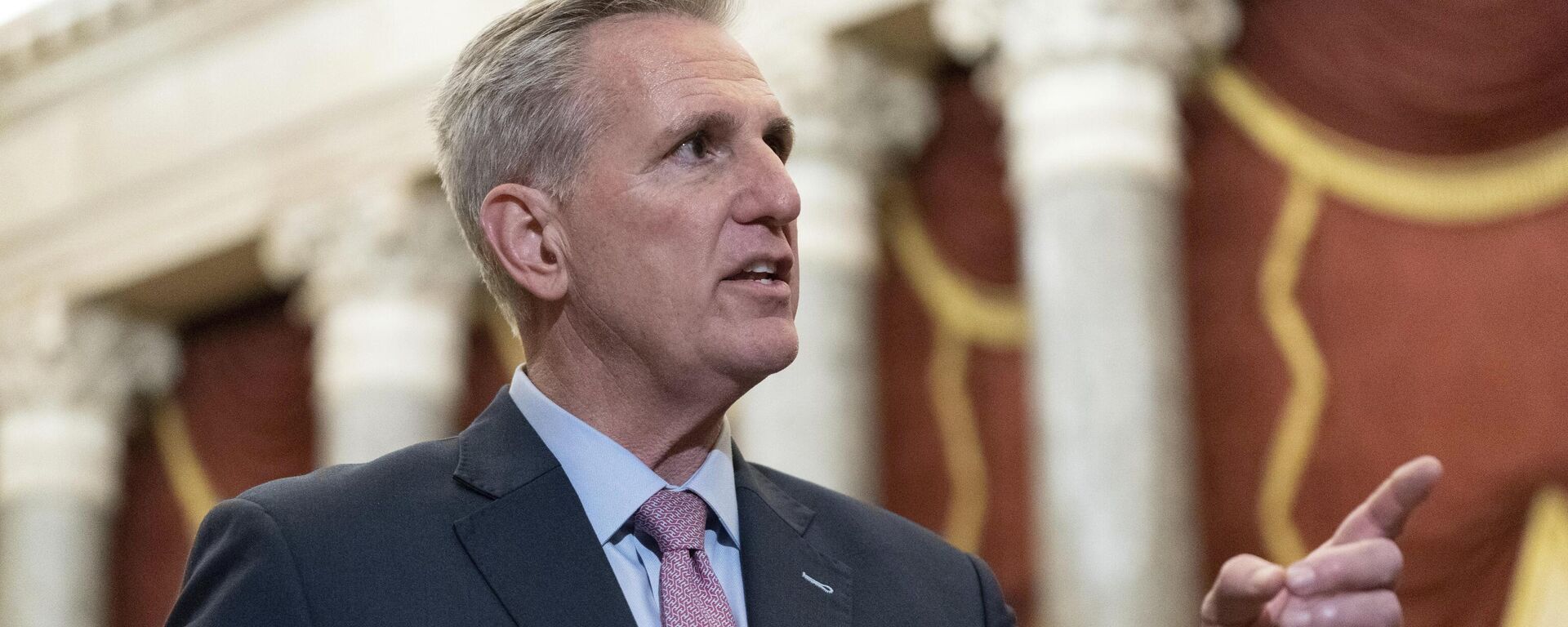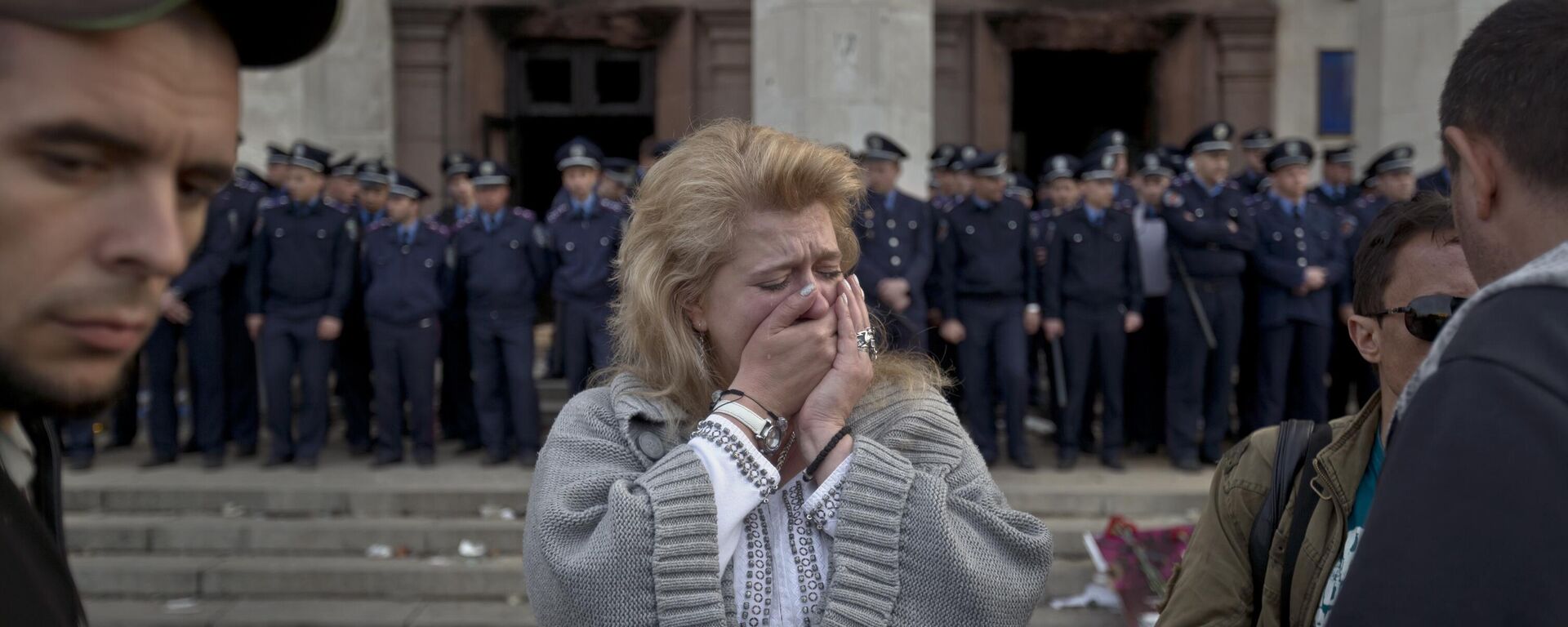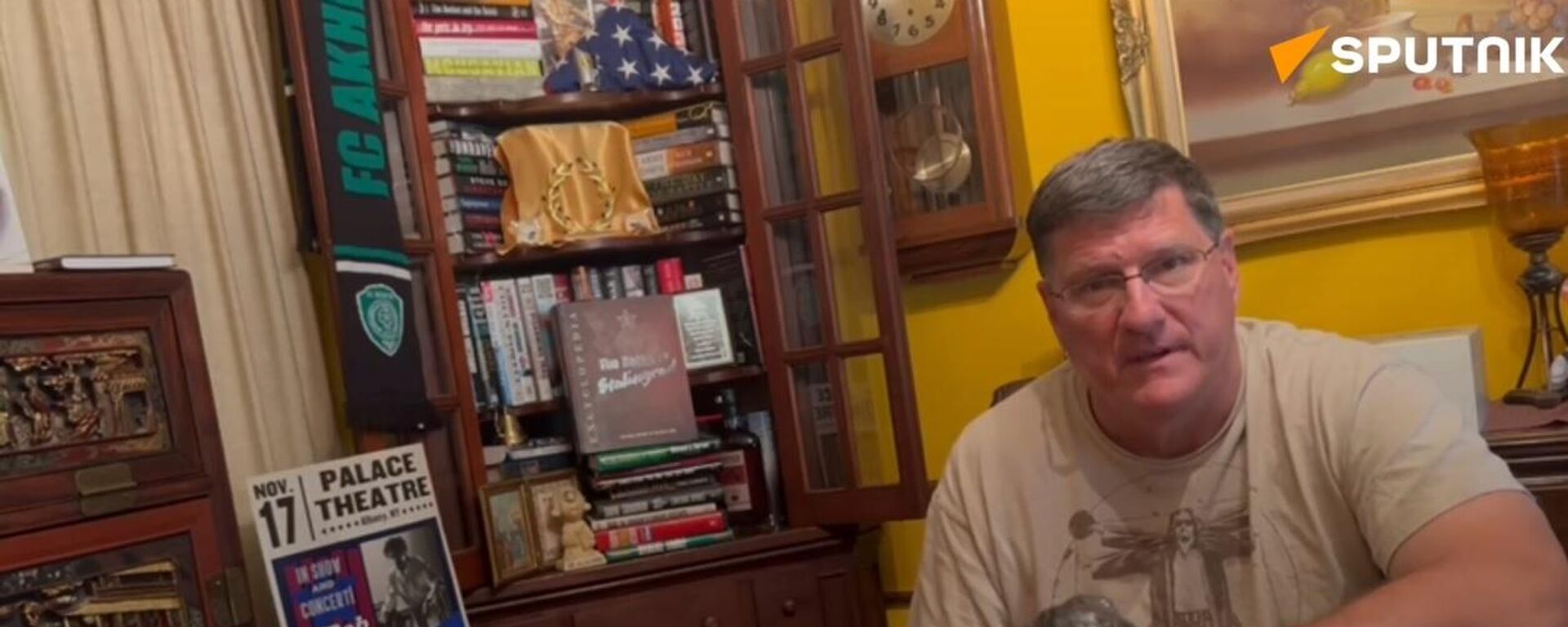https://sputnikglobe.com/20230607/neo-nazi-symbols-on-ukrainian-troops-cannot-be-divorced-from-their-origin-1110985378.html
Neo-Nazi Symbols on Ukrainian Troops 'Cannot be Divorced' From Their Origin
Neo-Nazi Symbols on Ukrainian Troops 'Cannot be Divorced' From Their Origin
Sputnik International
Jeremy Kuzmarov, managing editor of Covert Action, told Sputnik despite the attempting “whitewashing” of neo-Nazi symbolism and those who sport it, it “cannot be divorced” from its fascist, Nazi, and antisemitic meaning in Europe.
2023-06-07T17:31+0000
2023-06-07T17:31+0000
2023-06-26T13:47+0000
analysis
jeremy kuzmarov
paul krugman
ukraine
organization of ukrainian nationalists (oun)
neo-nazism
nazi symbols
https://cdn1.img.sputnikglobe.com/img/07e6/05/09/1095366435_0:0:1355:762_1920x0_80_0_0_2199bb8ed6125a56f6fde75b2e5ab899.jpg
A Monday article in the New York Times highlighted what Western media has sought to downplay for the past year: the existence of neo-Nazis in the Ukrainian military and the proliferation of Nazi symbolism, including the Totenkopf "Death's Head" emblem used by the SS and the Sonnenrad "Black Sun," which was also heavily used by the Nazis and subsequent groups sympathetic to their ideology.However, the Times sought to downplay the symbolism, casting it as devoid of the fascist meanings associated with it and repeating Ukrainian nationalist talking points about how the symbols have unique traditional meanings in Ukraine.Jeremy Kuzmarov, the managing editor of Covert Action magazine and the author of a number of books on US foreign policy, told Radio Sputnik on Tuesday that despite the attempting "whitewashing" of the symbolism and those who sport it, such symbolism "cannot be divorced" from its fascist, Nazi, and antisemitic meaning in Europe.'A Moral Outrage'Calling it "PR," Kuzmarov said media figures were "worried that this is giving a bad image of Ukraine and undermining the war effort and [they’re] not worried that they're actual Nazis … it's just a total whitewash from my reading of this."Kuzmarov said it was possible that some young Ukrainians soldiers were "naive" and pinning patches with these neo-Nazi symbols on their uniforms, only seeing it as a symbol of Ukrainian nationalism without knowing its deeper history.'Tortured Justification' for Arming KievHe noted that in the same edition of the New York Times, economist Paul Krugman penned an op-ed comparing US support for Ukraine today to the D-Day invasion of Nazi-occupied France in June 1944, which was launched on that same day 79 years ago.The journalist noted the situation is in fact "the complete opposite".Journalism or Propaganda?Kuzmarov said the media, including the Times, was "skewing the situation" by refusing to separate journalism from propaganda by asking Ukrainian soldiers to remove neo-Nazi patches prior to being photographed.Kuzmarov noted, as does the Times article itself, that part of the reason for the launching of the special military operation in Ukraine in February 2022 was to de-Nazify the country after such groups had been allowed for years to violently persecute and kill ethnic Russians in Ukraine, including pushing the eight-year-long war against the autonomous, Russian-speaking Donbass. The proliferation of such symbols among Ukrainian troops "gives some legitimacy" to those claims in Western eyes "and they can’t have that."US Long Supported Nazi CollaboratorsIn the final stages of World War II, the US rushed to make contact with Nazi collaborators from the Soviet Union and parts of Europe liberated by the Soviets, most of all those in Ukraine. After the war, the newly-created CIA helped sponsor an insurgency in Ukraine that by the agency’s own estimates killed more than 35,000 people by the time it was suppressed in the mid-1950s."Basically, that's what we're seeing again: the US CIA mobilizing neo-Nazi networks to take on the Russians. A lot of the front line fighting is carried out by these militias, many of which openly wear that insignia," Kuzmarov said.*The Azov battalion is an extremist organization banned in Russia.
https://sputnikglobe.com/20230607/republican-congress-leader-lambasts-push-for-more-spending-on-ukraine-1110977380.html
https://sputnikglobe.com/20230502/odessa-massacre-9-years-ago-ukrainian-neo-nazis-burned-50-people-alive-1110025933.html
https://sputnikglobe.com/20230606/scott-ritter-kakhovka-dam-attack-designed-to-cure-wests-ukraine-fatigue-1110958667.html
ukraine
Sputnik International
feedback@sputniknews.com
+74956456601
MIA „Rossiya Segodnya“
2023
News
en_EN
Sputnik International
feedback@sputniknews.com
+74956456601
MIA „Rossiya Segodnya“
Sputnik International
feedback@sputniknews.com
+74956456601
MIA „Rossiya Segodnya“
totenkopf; sonnenrad; ukraine; neo-nazi; symbols; patches, new york times, are ukrainians nazis, how many nazis in ukraine, why ukraine uses nazi symbols, nazism in ukraine, how radical are ukrainians, are ukrainians right or left, is azov nazi, what is azov battalion
totenkopf; sonnenrad; ukraine; neo-nazi; symbols; patches, new york times, are ukrainians nazis, how many nazis in ukraine, why ukraine uses nazi symbols, nazism in ukraine, how radical are ukrainians, are ukrainians right or left, is azov nazi, what is azov battalion
Neo-Nazi Symbols on Ukrainian Troops 'Cannot be Divorced' From Their Origin
17:31 GMT 07.06.2023 (Updated: 13:47 GMT 26.06.2023) After Russia launched its special operation in February 2022, Western media that had readily called Ukrainian nationalist groups neo-Nazis rushed to unring the bell, insisting the Azov Battalion and others had "departed" from their hateful ways and did not glorify figures who collaborated with the WWII invasion, occupation, and genocide.
A Monday article in the New York Times highlighted what Western media has sought to downplay for the past year: the existence of
neo-Nazis in the Ukrainian military and the proliferation of Nazi symbolism, including the Totenkopf "Death's Head" emblem used by the SS and the Sonnenrad "Black Sun," which was also heavily used by the Nazis and subsequent groups sympathetic to their ideology.
However, the Times sought to downplay the symbolism, casting it as devoid of the fascist meanings associated with it and repeating Ukrainian nationalist talking points about how the symbols have unique traditional meanings in Ukraine.
Jeremy Kuzmarov, the managing editor of Covert Action magazine and the author of a number of books on US foreign policy,
told Radio Sputnik on Tuesday that despite the attempting "whitewashing" of the symbolism and those who sport it, such symbolism "cannot be divorced" from its fascist, Nazi, and antisemitic meaning in Europe.
Calling it "PR," Kuzmarov said media figures were "worried that this is giving a bad image of Ukraine and undermining the war effort and [they’re] not worried that they're actual Nazis … it's just a total whitewash from my reading of this."
Kuzmarov said it was possible that some young Ukrainians soldiers were "naive" and pinning
patches with these neo-Nazi symbols on their uniforms, only seeing it as a symbol of Ukrainian nationalism without knowing its deeper history.
"The leadership and the organization, this is what it represents. So they're representing a Nazi ideology. And I mean, Ukrainian nationalism, I think, cannot be divorced from that history of fascists and Nazi collaboration and a fascist, antisemitic worldview. So it's an ugly nationalism. I mean, nationalism can have very ugly characteristics, as it's racial. And I think this is a clear case of that. And there's no reason a foreign country like the United States, citizens of a foreign country, should be supporting this ugly nationalist movement that has pro-fascist leaning, is dominated by Nazis, is a moral outrage. And it's sad that there haven't been more protests against this.'
'Tortured Justification' for Arming Kiev
He noted that in the same edition of the New York Times, economist
Paul Krugman penned an op-ed comparing US support for Ukraine today to the D-Day invasion of Nazi-occupied France in June 1944, which was launched on that same day 79 years ago.
“And that leading liberal commentator Paul Krugman, this supposedly great liberal luminary and economist, offers a major defense of the war in Ukraine and is attacking people on the left and the right who are questioning, don't have the resolve to support Ukraine to the hilt,” Kuzmarov noted. “And then on the next page, you have an article saying that this army is dominated by fascists and this is basically a tortured justification of the disgust about these symbols. So it's really disturbing.”
The journalist noted the situation is in fact "the complete opposite".
"The US, you know, fought Nazism in World War II and now they're openly on the side of Naziism and he's claiming that this is some great moral crusade," he said.
Journalism or Propaganda?
Kuzmarov said the media, including the Times, was "skewing the situation" by refusing to separate journalism from propaganda by asking Ukrainian soldiers to remove neo-Nazi patches prior to being photographed.
"They want to underplay the Nazi connection, you know, it relates to what we're discussing before: that the [pro-Stepan] Bandera element has kind of hijacked the Ukrainian nationalist movement against elements that would favor cooperation with Russia or are supportive of Russia. And so it's giving a very misleading picture to the public. But I'm not taking that photo - because that's the reality that these soldiers on the front line, they're wearing those insignia, they are pro-Nazi. They are [pro-] Bandera. They are part of that regressive Ukrainian nationalist tradition. So if he's telling them to take it off, he's trying to protect the image of the Ukrainian Army and undercut - because, you know, it's related to the politics of the war."
Kuzmarov noted, as does the Times article itself, that part of the reason for the launching of the special military operation in Ukraine in February 2022 was to de-Nazify the country after such groups had been allowed for years to violently persecute and kill ethnic Russians in Ukraine, including pushing the eight-year-long war against the autonomous, Russian-speaking Donbass. The proliferation of such symbols among Ukrainian troops "gives some legitimacy" to those claims in Western eyes "and they can’t have that."
US Long Supported Nazi Collaborators
In the final stages of World War II, the US rushed to make contact with Nazi collaborators from the Soviet Union and parts of Europe liberated by the Soviets, most of all those in Ukraine. After the war, the newly-created CIA helped sponsor an insurgency in Ukraine that by the agency’s own estimates killed more than 35,000 people by the time it was suppressed in the mid-1950s.
"Those programs were supported by the United States and the CIA under the Operation Rollback. They were actually recruiting Nazis. Reinhard Gehlen was a Nazi spymaster who was the expert on Soviet intelligence. He ran these networks as a proxy, an agent of the CIA, and the CIA was behind these terrorists and the attacks against pro-Russian elements right after World War Two, in the early years of the Cold War."
"Basically, that's what we're seeing again: the US CIA mobilizing neo-Nazi networks to take on the Russians. A lot of the front line fighting is carried out by these militias, many of which openly wear that insignia," Kuzmarov said.
"That's the lineage of these groups. And they, I think, have a pretty openly pro-fascist outlook. And they hate the Russians. They want to kill the Russians, and as many as they can. They set up a website where they feature their photos of Russians they kill, gruesome photos, and they're proud about this. And this website may have been sponsored by the CIA, who is encouraging this kind of behavior as they were after World War Two. And it's a pretty sad state of affairs."
*The Azov battalion is an extremist organization banned in Russia.





